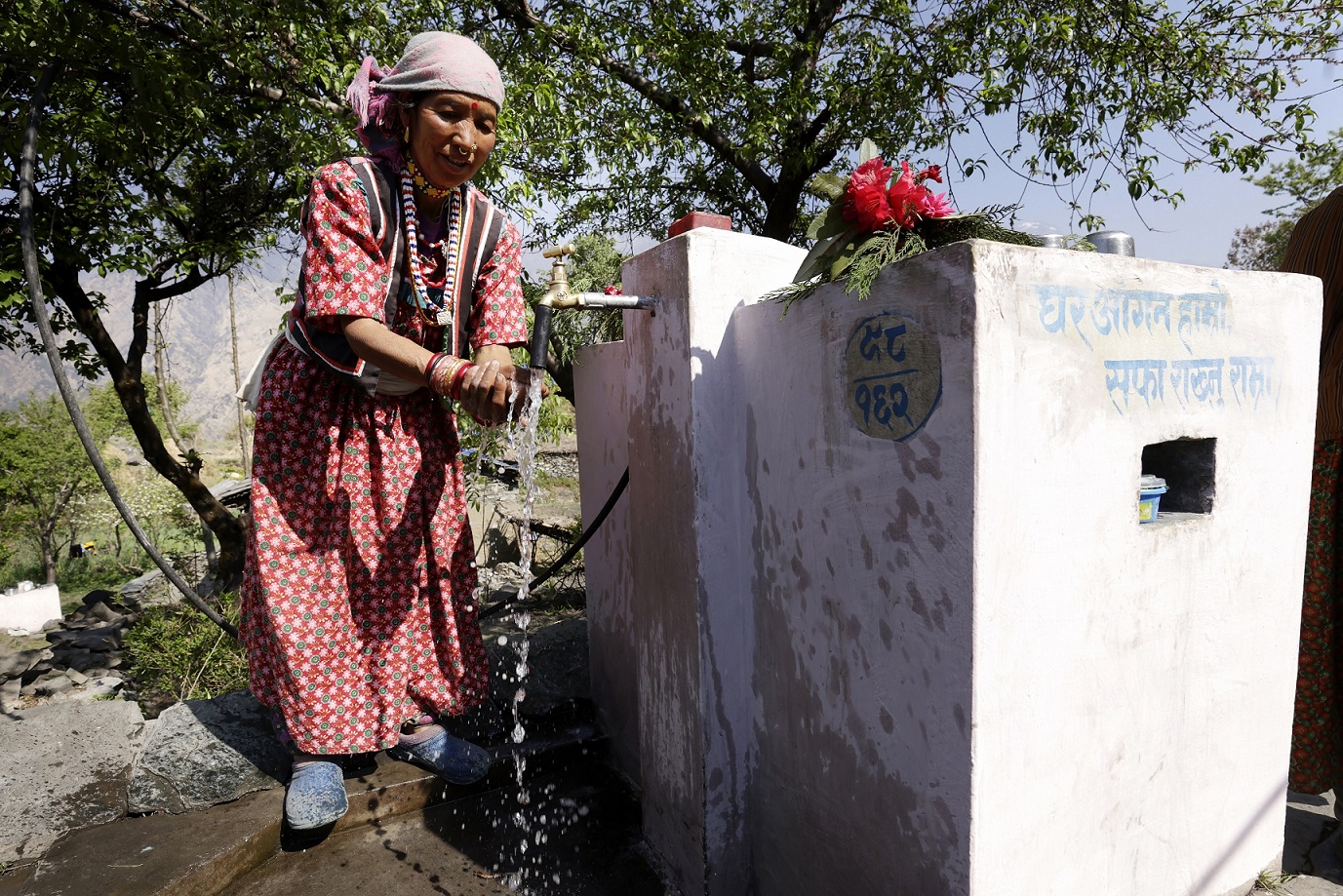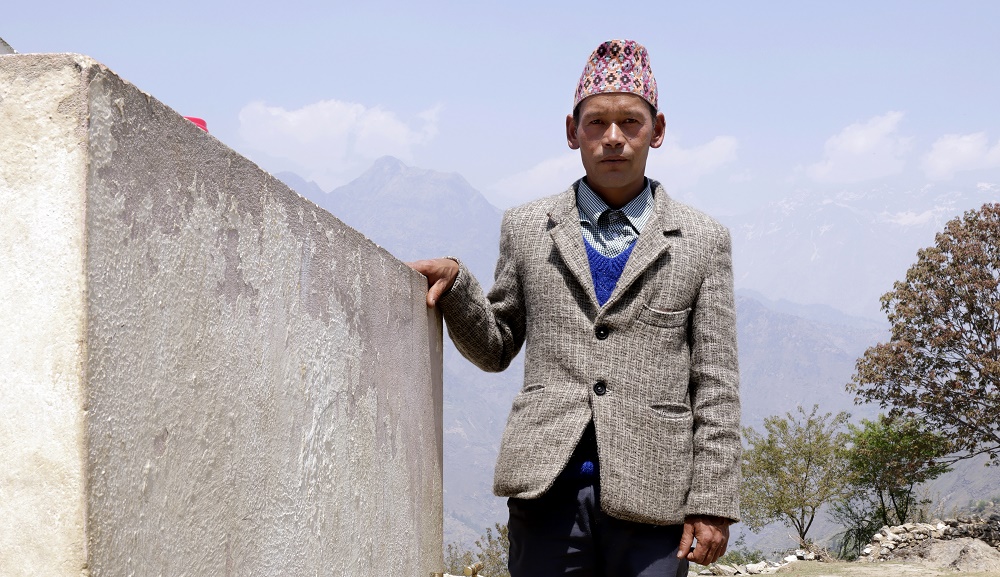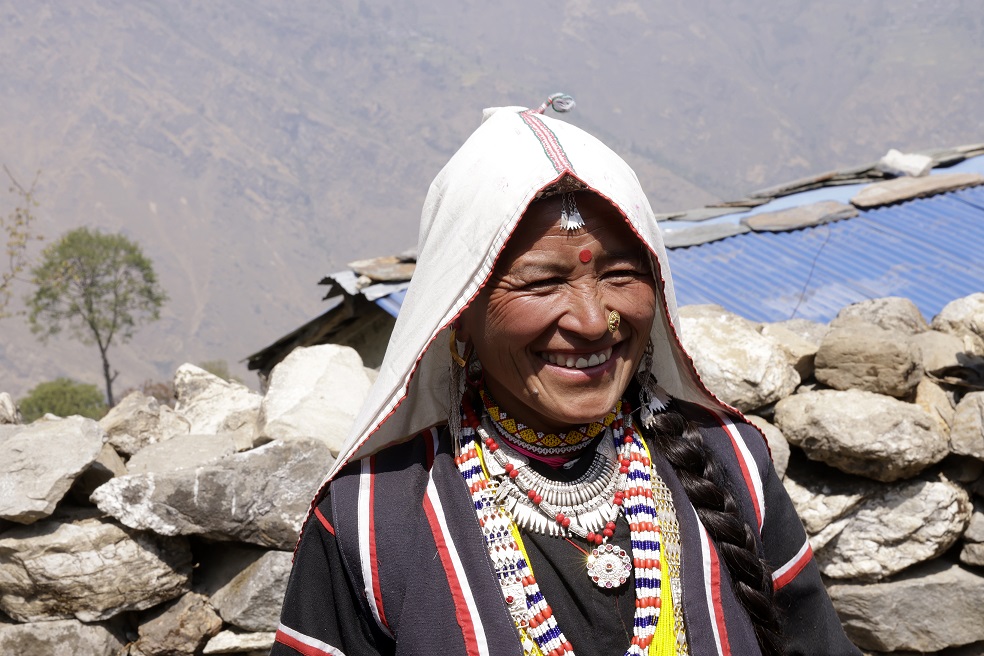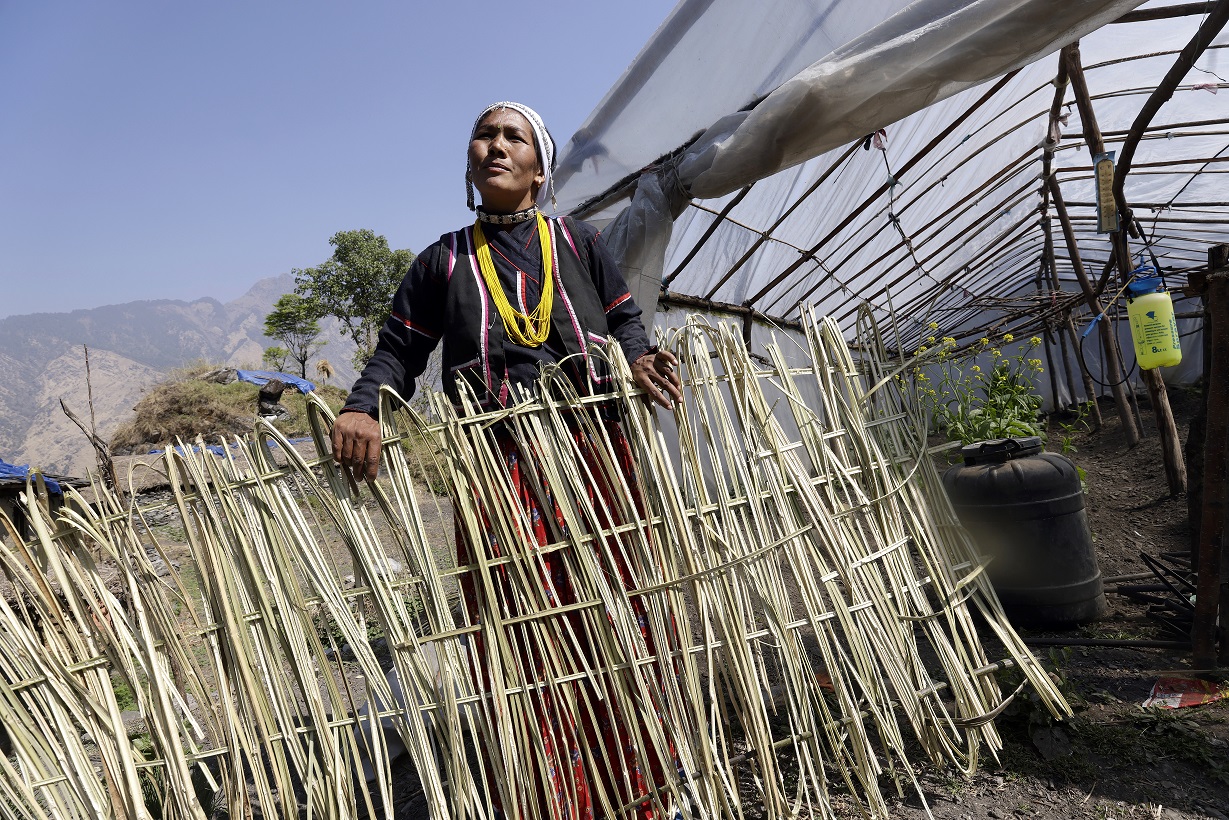Water management project in Nepal improved lives of hundreds of thousands of people
In 2006–2022, the Rural Village Water Resources Management Project in the Far West regions of Nepal brought clean water to more than 600,000 people. At the same time, it promoted health and food security, advanced the rights of women and minorities, and improved economic livelihoods.

The Far West is one of the least developed and poorest regions in Nepal. People may have to trek for more than one hour to reach services, such as a health centre or a school. Some of the mountain villages are still without road access.
The lack of roads was a great complication for the implementation of the project. All the supplies, including bags of cement, had to be carried by people to some of the villages.
The Rural Village Water Resources Management Project has been supporting Nepal’s own development goals. The period from 2006 and 2022 was divided into three phases, the most recent phase extending from 2016 to 2022. The European Union was impressed by the project results, and it has supported the project’s Phase III since 2016.
In addition to the input from the EU and the governments of Finland and Nepal, the Far West municipalities and residents contributed significantly to the financing and implementation of the project.
Local participation guarantees sustainable results
The development cooperation project covered more than 60 municipalities in the Sudurpaschim and Karnali Provinces. The municipalities and the village residents were strongly committed to the project, which was essential for sustainable results.
“In the third phase of the project, municipalities and village communities nearly doubled their share of the project costs, which shows confidence in its success,” says Jari Laukka, Senior Specialist for water, sanitation and hygiene in development cooperation at the Embassy of Finland in Kathmandu.
The main contribution to the project by villagers was manual labour. They used shovels to dig water-pipe trenches of nearly one meter deep to keep the pipes safe from landslides. Each pipeline covers a distance of many kilometres from the mountain springs to the main water tank in the village.
From the village water tank made of concrete, the water is supplied to private water taps in people’s yards and to community taps at public buildings, such as schools. The project built more than 1,000 village water tanks and 4,700 community water taps.
Villagers were trained in building, maintaining and repairing the water systems. Each water system is maintained by a village maintenance worker, who checks the condition and functioning of the structures every month and repairs any faults detected.

Dilip Sing Dhami, the village maintenance worker in Tamakhani Bhogawa, is responsible for maintaining the hand-washing facility at the village primary school.
“The water in our taps comes from a spring three kilometres away,” says Dilip Sing Dhami.
When the project ends, the responsibility for the functioning of the water schemes will rest with the water user committees formed by representatives of the water users. The committees collect a small fee for the water that covers the costs of minor repairs and the wages of village maintenance workers. Municipalities will finance any major repairs.
The project has improved the municipalities’ capacity and administration in the water sector.
Not just potatoes
The project helped the municipality of Apihimal to build a private water tap on each yard. The taps were built by the villagers.
Improved access to water has the greatest impact on the lives of women and girls. Before, it could take women several hours a day to go and get water.

Women use the time they used to spend on getting water on productive activities, such growing vegetables in their kitchen gardens or in greenhouses. The building of irrigation systems has made it possible to grow vegetables in greenhouses. Children can use the time they used to spend on getting water on studying.
Lalita Dhami is leading the development of kitchen gardens in her community. She says that children in particular are pleased that they are not eating just potatoes.
“Before, we grew only potatoes. We have become fatter now that our diets are more balanced,” says Lalita Dhami laughingly and points at her belly.
Irrigation systems and greenhouses have improved food security. Irrigation makes it possible to grow vegetables in greenhouses even outside the natural growing season, and people can eat a balanced diet almost year round.
In addition, families can earn extra money by selling crops they do not need themselves. Earning their own money has brought respect for the women and elevated their status in their communities.

When people have better access to water, they have better chances of adapting to climate change. It has become more difficult to predict rain on the slopes of the Himalayas. Water springs in the mountains that used to be good sources of water are now dry more often than before.
The villages have made contingency plans to prepare for their water systems being damaged in natural disasters, such as landslides and earthquakes.
The Rural Village Water Resources Management Project was carried out by FCG Finnish Consulting Group.
An independent evaluation of the Rural Village Water Resources Management Project was completed in June 2022:
Rural Village Water Resources Management Project (RVWRMP), funding in 2006–2022:
- Government of Nepal: EUR 20.6 million
- Local municipalities in Nepal: EUR 10 million
- Beneficiaries: EUR 17 million; mostly labour input
- EU: EUR 20 million
- Finland: EUR 43.5 million
Read more
- Read about the impact of the Rural Village Water Resources Management Project on the lives of women and girls and marginalised Dalits.
- Read about the results of the Rural Village Water Resources Management Project in the development of livelihoods and rural businesses.
- Finland's relations and development cooperation in Nepal
